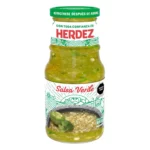 Enchiladas are tacos smothered in sauce and there are many different types, but the tangy and gooey version known as enchiladas suizas is a classic Mexican favorite.
Enchiladas are tacos smothered in sauce and there are many different types, but the tangy and gooey version known as enchiladas suizas is a classic Mexican favorite.
But have you ever wondered what could be Swiss about corn tortillas stuffed with shredded chicken, smothered in green salsa, and topped with lots of melted cheese? Let me tell you the history of this version of our beloved enchiladas.
In 1861, France, Britain, and Spain invaded Mexico after Mexican President Benito Juárez suspended the payment of foreign debt. While the British and Spanish withdrew after negotiations with Juárez, France’s Napoleon III pursued a more ambitious plan to establish a new empire in Mexico.
As a result, Maximilian Habsburg became Emperador Maximiliano of Mexico in 1864, but after Napoleon withdrew his troops in 1867, Benito Juárez quickly led Mexican forces to victory and the hapless Maximilian was executed.
During his brief reign, Maximilian and his wife Charlotte had a long list of dedicated staff. The most famous story about the origin of enchiladas suizas is told by the historian Rodrigo Llanes, believed to be the great-great-grandson of Maximiliano’s butler.
When the Empire fell and Maximilian was executed, the unemployed butler and his family returned to their ancestral home of Coahuila. In their luggage they carried precious cargo, they had packed the recipes that were served at the palace. However, the recipe for Enchiladas Suizas was not in the rescued stash.
An iconic restaurant made enchiladas suizas famous
In 1910, decades after the fall of the Empire, the Revolutionary War broke out, with the worst violence concentrated in northern Mexico. Rodrigo’s ancestors sought safety by moving back to Mexico City. With a pile of old recipes and the need to earn a living, they decided to open a restaurant called “Café Imperial” The menu served many of the recipes they had recovered from the palace, often with a European flair.
To offer a version of enchiladas worthy of an emperor, Rodrigo’s grandmother added copious amounts of melted cheese and cream to traditional green salsa. One story says that enchiladas suizas were named because the colors of the dish mirror the Swiss Alps, the other says it pays homage to Switzerland’s world-famous dairy products. Whatever the reason for the name, this dish quickly became a favorite on the menu at Café Imperial.
In 1903, American brothers Walter and Frank Sanborn acquired Café Imperial and renamed it Sanborns. While the modern Sanborns chain boasts 129 restaurants across Mexico, Enchiladas  Suizas are still a firm favorite to this day.
Suizas are still a firm favorite to this day.
Here’s the recipe for you to enjoy this hearty dish at home. You can skip a step by using store-bought green salsa.
⇒Ingredients
For the sauce:
1 lb. tomatillo
3 serrano jalapeño chiles
2 cloves garlic
½ onion
1 med. bunch fresh cilantro
1 Tbsp. powdered chicken broth
8 oz. cream cheese
2 oz cream
salt to taste
For the enchiladas:
2 c. shredded, cooked chicken breast
12 corn tortillas
vegetable oil
2 c. grated swiss cheese
 Drizzle skillet with oil, lightly roast the tomatillos, onion, garlic and chiles. Transfer to a blender and blitz with the powdered broth, cilantro and cream cheese until smooth.
Drizzle skillet with oil, lightly roast the tomatillos, onion, garlic and chiles. Transfer to a blender and blitz with the powdered broth, cilantro and cream cheese until smooth.
Add 1 Tbsp. of oil to a saucepan over medium heat. Pour in the salsa and cook for 2 minutes. Add the cream and salt to taste. Cook for two more minutes and turn off the heat.
Heat 3 Tbsp. of oil in a heavy skillet over medium heat. Fry tortillas, one at a time, until blistering but still soft enough to roll, 10 to 20 seconds per side. Drain on paper towels.
Place 2 heaped Tbsp. of shredded chicken down the center of each tortilla and roll. Arrange, seam-side down, into a shallow baking dish. Repeat to fill and roll the remaining tortillas.
Pour sauce over the tortillas, top with the grated cheese and bake uncovered in an oven preheated to 350°F, until sauce is bubbly and cheese is melted and starting to brown, about 20 minutes. Serve and enjoy!
There you have it, the story of how there’s nothing Swiss about enchiladas suizas but they’re delicious and you can enjoy at home or your favorite restaurant. ¡Buen provecho, amigos!

Leave a Reply